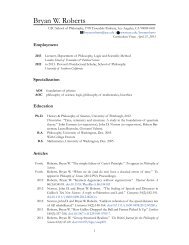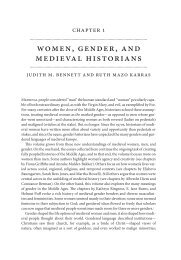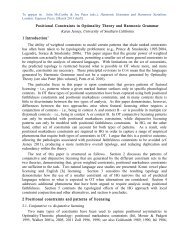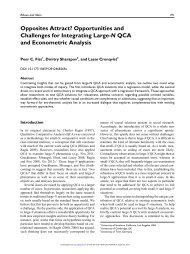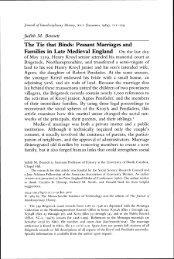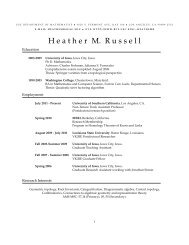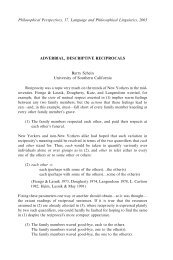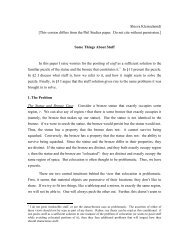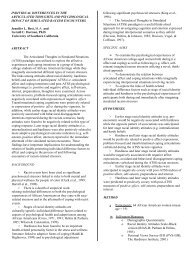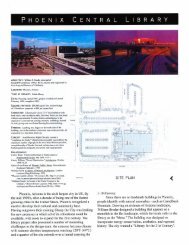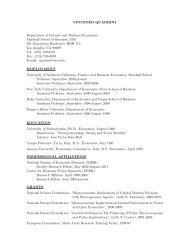The Racial Resegregation of Los Angeles County, 1940-2000
The Racial Resegregation of Los Angeles County, 1940-2000
The Racial Resegregation of Los Angeles County, 1940-2000
Create successful ePaper yourself
Turn your PDF publications into a flip-book with our unique Google optimized e-Paper software.
0.70<br />
0.60<br />
0.50<br />
0.40<br />
0.30<br />
0.20<br />
0.10<br />
0.00<br />
Charts 6a HISPANIC NEIGHBORS<br />
Probability that Hispanics, Blacks, Whites, and Asians<br />
will have Hispanic Neighbors in <strong>Los</strong> <strong>Angeles</strong> <strong>County</strong>, <strong>1940</strong>-<strong>2000</strong><br />
<strong>1940</strong> 1950 1960 1970 1980 1990 <strong>2000</strong><br />
Hispanics with Hispanics 0.09 0.34 0.31 0.38 0.50 0.58 0.63<br />
Blacks with Hispanics 0.04 0.09 0.10 0.11 0.19 0.34 0.41<br />
Asians with Hispanics 0.05 0.15 0.16 0.24 0.27 0.32 0.24<br />
Whites with Hispanics 0.02 0.04 0.07 0.14 0.18 0.22 0.25<br />
Hispanics with Hispanics<br />
Blacks with Hispanics<br />
Asians with Hispanics<br />
Whites with Hispanics<br />
Chart 6a, “Probability that Hispanics, Blacks, Whites, and Asians will have Hispanic<br />
Neighbors in <strong>Los</strong> <strong>Angeles</strong> <strong>County</strong>, <strong>1940</strong>-<strong>2000</strong>,” shows first <strong>of</strong> all that all groups have<br />
been increasingly likely to have Hispanic neighbors since <strong>1940</strong>.<br />
<strong>The</strong> most dramatic increase has been in the isolation <strong>of</strong> Hispanics. By <strong>2000</strong> Hispanics were<br />
63% likely to have only other Hispanic neighbors.<br />
Next most dramatic has been the increase in likelihood that Blacks will have Hispanic<br />
neighbors, a pattern we already explored in Table 5b. However, here we can see that<br />
Blacks have increased their exposure to Hispanics at a higher rate and at greater levels that<br />
either Whites or Asians.<br />
Whites and Asians have the lowest probability <strong>of</strong> sharing neighborhoods with Hispanics,<br />
and the score for Asians has actually decreased since 1990, from 32% to 24%.<br />
Bear in mind, however, that the “Hispanic Neighbors” perspective is looking at Hispanics<br />
from the outside in. Table 6b shows what Hispanics see from the inside <strong>of</strong> their<br />
community looking out at Whites, Blacks, and Asians. <strong>The</strong> story is very different.<br />
Race Contours <strong>2000</strong> –<strong>Resegregation</strong> <strong>of</strong> <strong>Los</strong> <strong>Angeles</strong> <strong>County</strong>, <strong>1940</strong>-<strong>2000</strong> 17



